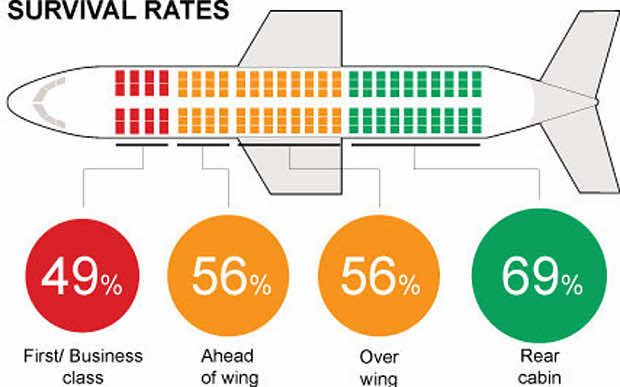The fear of a plane crash is very real and as a result, many people suffer from flying phobia and become restricted in their travels. Even when we can statistically say that plane crashes have much less probability of happening than car crashes, people aren’t convinced as the very feeling of flying in mid-air cannot be digested by the faint-hearted. We cannot do anything about extreme cases of flying phobia, but if your mistrust over the aerial routes has increased after the Malaysian crashes of MH-370, then you ought to know these tips to make sure can survive a problem while flying:
1. Realize you have 90 seconds
Once a plane has crashed, it is extremely urgent that you try to get out and run as fast from it as possible. Aircraft fuel is known to catch fire easily, and thus, it can reduce what’s left of it in one mighty blast to ashes. Let it be clear to all readers that the explosion will happen at one point or another as it is inevitable in the case of such an enormous storage of fuel. If you have survived the crash, fancy your luck later when you are at a comfortable distance from the plane!
2. Remembering the minus eight/plus three rule!
An overwhelming majority of aerial accidents occur during the first three seconds after lift-off and eight seconds after touchdown. You need to extra vigilant during these crucial moments as an instantaneous decision might be able to save your life in case of a crash.
3. Fly in big planes
Bigger and newer planes are much less likely to crash than older and smaller ones. When a larger plane crashes, there is also a higher probability of the passengers being saved than the crash of a smaller plane. Bigger airplane’s pilots are also much more experienced to handle these kinds of situations. So, avoid smaller planes just to save 50 bucks!
4. Know the five-row rule
Always try to get your seat booked within five rows away from the emergency exit. If you don’t do so, the probability of surviving will drop. Also, the aisle seats are considered statistically safer than window ones.
5. Remain physically fit
Aircraft crashes require swift. Alert response and if you aren’t in good shape, you might not do well in an emergency. Study shows us that young, fit males are more likely to be saved.
6. Read the safety instructions very carefully
These signs bother many people but actually, they point out the exact location of the emergency doors and how to unbuckle your seatbelts quickly and what to do in case the pilot asks the passengers to brace themselves. It is very important that you pay attention to it in each aircraft as they are all different designs.
7. Know what is the proper brace position
This might seem silly, but it is crucial that you do this. This posture dramatically decreased the head injury chances and keeping your limbs unbroken.
Aircraft induce a certain kind of drowsiness due to the pressurized cabin that can make you complacent. Try to shake it off and keep a watchful eye on the crew and try to find out what’s wrong if they’re acting suspiciously. Make an escape plan as well.
9. Put your Oxygen mask immediately
Don’t wait for the pressure to drop. Always try and put it on immediately. It is a definite risk as the cabin may get unpressurized any moment. Also, clamp in firmly in place.
10. Forget your personal belongings for a while
Many people after surviving the main crash believe the plane is harmless now and start worrying about their damn cargo. My advice is to get straight out from the plane using the emergency exits if you have to. Rest only after getting some distance from it. Cargo can wait till the crew has deemed it fit to return. Remember: Your life is more precious than any luggage in the world!

